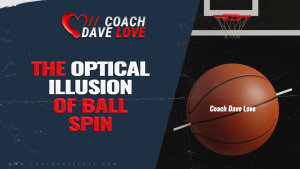This is one of the biggest debates in skill development. Should you turn your feet, or square them to the target? Tilt, or ten toes at the rim?
There are players that do one, and othesr that do the other, and many times the same player will appear to have both habits in different settings.
I’ve been fortunate enough to work with players of all skill levels, and talk so some of the best shooting coaches and shooters of all time. I’ll tell you what I believe, and why, but I’ll also explain the grain of salt you should take the advice with.
Let’s start with the grain of salt. Basketball is a tough game. Rarely do players (especially the best players at the highest level) get to do exactly what they want when they shoot shots in game. Game shots are always flawed. Players do their best to execute the shot as best they can but they usually have an equally talented defender chasing close by, trying to stop them. To copy what NBA players do in games is the first mistake we should avoid. The reality is, they rarely have time to do what they want in games so if we copy them in that setting, we are copying them at their worst. Plus, the better the shooter they are, the less time they probably have, and less likely they are to have done exactly what they meant to do.
If you want to see what habits players are trying to build at the NBA level, watch them shooting free throws. People will argue that all great shooters turn their feet when they shoot. And if we look at contested 3s off the move, those people would be fairly correct. But we need to remember that the lack of time and the distance are forcing players to make small errors (like rotating their body) that cause more misses. And this is precisely why we miss more in games and from the 3 point line than we do from the free throw line.
So two years ago I watched the top 40 free throw shooters in the NBA. These were players that all made 84% or higher from the line. 21 of those 40 squared their toes to the rim. Naysayers will say “yeah, well then 19 turned their feet, so it’s basically even.” But it isn’t even. A small number of others would point their dominant toe at the target but turn their other foot, either out or in. Another small group had the slightest turn that I would call square, but I had to admit that others might consider it a turn. Another group went pigeon toed on both feet. And when it came down to it, only 3 of the top 40 significantly turned. So if your argument is that players should turn their feet because all the best do it, just be aware that most of the best actually don’t when they have time to be mindful and when they shoot their highest percentage. But they do turn when they are rushed and shoot a lower percentage. Which would you copy?
The next reason people will give for turning their feet is usually “to reduce shoulder tension”. Personally, I’ve never had a player complain about shoulder tension. They may say something is uncomfortable, but I explain it is only uncomfortable because they haven’t done it before. The more they do it, the more natural and comfortable it will feel. And besides, most players are doing comfortable things that are helping them miss, and might need to learn to do something correct and uncomfortable for a while. As a coach on twitter recently said “I’m a really bad comfortable golfer.”
Now take a second to think now about the direction you would jump. If you were jumping, even if you were trying to jump straight up in the air, wouldn’t you jump in the direction your feet are pointed? And if you are jumping that direction, aren’t you creating energy in that direction that we are giving to the basketball? Shouldn’t that energy that we create with our feet and in the direction that we might jump be working towards the rim? Forget the jump even, and just focus on where your centre of gravity moves as your raise up onto your toes. If your toes are pointed at the target, your centre of gravity will move up and slightly at the target, which means your shooting hand will be moving at the target while it snaps the wrist. But if you turn your feet, now your centre of gravity is moving slightly in that direction, which means your hand will be moving slightly that direction as it is trying to snap straight forward. Let me say that again. If you turn your feet left, then your hand will be moving left as you try to shoot forward. Does that sound like the easiest way to do it?
“But this is to align your shooting hip and elbow”, people will say. Unfortunately this has nothing to do with anything. I took the time to do a bio-mechanical study at the University of Calgary a couple of years ago to measure what happens to other parts of the body when a player squares their feet, or turns their feet to shoot. We had people that squared naturally, or turned naturally. We had both groups shoot both ways. We had a small sample size of shots, so the results weren’t really our concern. We were measuring what changed in their body. The one noted difference we found was that regardless of their natural habit, EVERYONE pronated their wrist more during the shooting motion when their feet were turned, and EVERYONE regardless of their natural habit remained in a neutral position longer throughout the shooting motion when their feet were square. When each player turned their feet, they were also forced to rotate their wrist into position AS they were shooting, whereas each player with feet square (regardless of their natural habit) had their wrist in position much earlier.
So you can quickly figure out that I encourage players to try to square up. As my mentor says, “that’s what you strive for. You don’t always get it, but that’s what you are after in a perfect world”.



